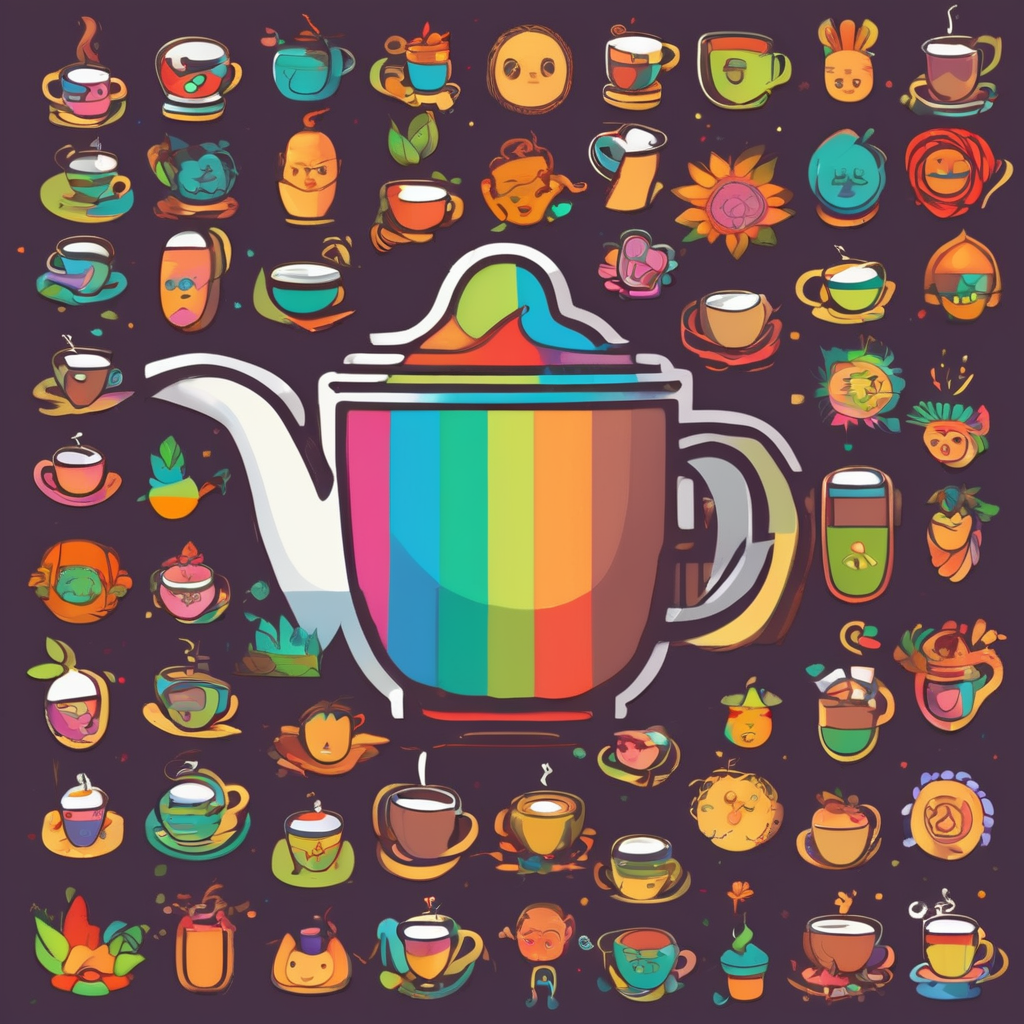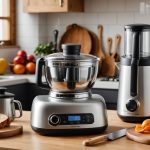Understanding Central Vacuum Systems
A central vacuum system is an efficient solution for home cleaning, especially beneficial in maintaining kitchen cleanliness. Unlike traditional vacuums, central systems have a central power unit, usually located outside living areas, connected to inlets throughout the home via a network of pipes. These systems draw dust and debris from rooms, eliminating the need to carry a portable machine.
Components of a Central Vacuum System
The essential components include the power unit, piping, inlets, and cleaning accessories. The power unit, the core of the system, houses the motor and dirt collection canister. The piping, often installed in walls, channels dirt to the power unit. Inlets are strategically placed access points where you can attach hoses for cleaning. Accessories like hose kits and brushes enhance functionality and adaptability to different surfaces.
Topic to read : Transform Your Diet: How an Organized, Labeled Pantry Boosts Healthy Eating
Differences from Traditional Vacuum Systems
Central vacuum systems offer several advantages over traditional vacuums. They are more powerful, capable of better dust and allergen reduction. The main benefit lies in their ability to remove dust entirely from living areas, maintaining superior indoor air quality. Additionally, they operate more quietly since the motor is located outside the main household spaces. This innovation in domestic cleaning presents a compelling case for installation in homes prioritising cleanliness and health.
Benefits for Kitchen Cleanliness
Central vacuum systems provide significant advantages for maintaining kitchen cleanliness, primarily through enhanced dust removal. Their powerful suction capabilities result in the more effective extraction of dirt and debris, particularly valuable in areas that see frequent crumbs and spills, like the kitchen. This efficiency helps in keeping surfaces spotless with minimal effort.
Also read : Discover the Impact: How Kitchen Cabinet Colors Shape Your Mood and Eating Patterns
Another striking benefit is the reduction of cleaning time. As the central system draws the dust away from the living areas straight to the main unit, users find themselves spending less time pushing and pulling heavy vacuums. Attachments designed specifically for kitchen use, such as floor brushes and small nozzle additions, aid in swift and thorough cleaning. This convenience allows homeowners to focus on other tasks or enjoy their free time.
Moreover, central vacuums improve accessibility to hard-to-reach areas. Spaces underneath appliances and cabinets, notoriously difficult to clean with regular vacuums, become effortlessly manageable. The longer hoses of central systems enable users to reach into tight spots where dust and crumbs commonly hide. Ultimately, these systems offer a robust, straightforward solution for those prioritising a cleaner, healthier kitchen environment.
Benefits for Kitchen Cleanliness
When it comes to maintaining a clean kitchen, a central vacuum system stands out as an efficient tool. One significant advantage is its ability to remove dust and debris with remarkable efficiency. Unlike traditional vacuums, which merely redistribute particulate matter, central systems ensure that dirt is entirely expelled from the kitchen environment, promoting superior kitchen cleanliness.
Moreover, these systems dramatically reduce cleaning time. With strategically placed inlets, users can quickly clear both visible and hidden mess, reducing the need for labor-intensive cleaning sessions. This expedited process not only saves time but also encourages regular maintenance, preventing grime from accumulating in the first place.
The design of central vacuum systems also grants enhanced accessibility. Users can readily clean hard-to-reach areas, such as under appliances and in tight corners, with a variety of attachments and hoses. This thorough clean ensures that every nook and cranny meets high cleanliness standards.
Additionally, the absence of a heavy, portable unit simplifies movement around the kitchen, making it easier to cover larger areas without the cumbersome encumbrance of traditional models. As a result, homeowners experience a cleaner, more inviting kitchen space with reduced effort.
Impact on Allergen Reduction
Central vacuum systems significantly contribute to allergen reduction, creating a healthier home environment. Unlike traditional vacuums, these systems expel dust and allergens directly out of living spaces, preventing re-circulation of particles that typical vacuums might miss. This unique design helps ensure that allergens are not merely relocated but are entirely removed from indoor air.
Filtration Efficiency
Central vacuums generally come equipped with advanced filtration methods, often surpassing their traditional counterparts. They effectively trap and eliminate allergenic particles, such as pollen, dust mites, and pet dander. This robust filtration capability enhances the overall indoor air quality, creating a cleaner living environment essential for individuals suffering from asthma or allergies.
Role in Enhancing Air Quality
Enhancing indoor air quality is one of the standout benefits of using central vacuum systems. Given their external motor location, these systems don’t recirculate fine dust back into spaces, which is crucial for reducing airborne allergens. The absence of a dusty exhaust improves air purity, providing a more comfortable and health-conscious home atmosphere.
By prioritising allergen reduction, central vacuum systems not only offer an efficient cleaning solution but also play a pivotal role in promoting a healthier, more comfortable home atmosphere.
Impact on Allergen Reduction
Central vacuum systems excel in allergen reduction, significantly enhancing indoor air quality and contributing to a healthier home. How do these systems achieve this? Unlike traditional vacuums, they are adept at trapping allergens due to their ability to completely remove dust and debris from living spaces. This occurs because the dust is collected in a remote location outside the main living areas, minimizing the risk of allergen re-circulation within the home.
Traditional vacuums often struggle with filtration, which results in some allergens being released back into the air through exhaust emissions. Central systems, conversely, often incorporate robust filtration mechanisms, ensuring that even the finest particles are captured and directed to the main collection unit outside your living space. This ensures that the air remains cleaner and more breathable.
The role of central vacuums in improving indoor air quality is undisputed, rendering them an essential component in homes where health is prioritised. Families who use central vacuum systems report fewer allergy symptoms and a noticeable improvement in general well-being. In essence, these systems act as a proactive measure in reducing contaminants effectively, showcasing their value as a long-term investment in a healthier lifestyle.
User Testimonials and Case Studies
Listening to real-life experiences offers invaluable insights into the effectiveness of central vacuum systems. Many users report significant improvements in kitchen cleanliness, noting that these systems excel at removing dust and particles with ease. This enhancement results in cleaner, more inviting kitchen spaces, free from lingering debris that traditional vacuums often miss.
One compelling case study highlights a family’s battle with allergens. By installing a central vacuum, they substantially reduced indoor allergens, providing relief for family members with allergies. This tangible improvement underscored the system’s role in promoting a healthier home environment, a benefit echoed in testimonials from allergy sufferers appreciating the cleaner air quality.
Feedback also praises the ease of use and low maintenance requirements. Users note the convenience afforded by strategically placed inlets, which streamline cleaning tasks and eliminate the need to haul cumbersome equipment around. Customer satisfaction is notably high regarding the systems’ longevity and performance, with regular maintenance ensuring they function optimally.
Central vacuums have transformed home cleaning experiences, offering practicality and effectiveness that endears them to their users. These positive experiences speak volumes about the systems’ capability to significantly enhance home hygiene and air quality.
Practical Installation Tips
Installing a central vacuum system requires careful planning to ensure seamless integration within your kitchen or home layout. Here’s a guide to streamline the installation process.
Preparing for Installation
Before installation, assess your kitchen space to determine the most suitable paths for piping. Consider professional assistance to evaluate existing structures and prepare for potential modifications. It’s important to decide on whether you’ll be undertaking a complete kitchen renovation or retrofitting into your existing space, as this can influence the installation approach significantly.
Ideal Locations for Inlets
Strategically position inlets to maximise accessibility and efficiency. In a kitchen, placing inlets near entrances or high-traffic areas ensures quick response to spills and messes. Corner edges and spots close to the primary cooking areas can also enhance convenience, allowing for on-the-fly clean-ups without long hoses stretching across the room.
Considerations for Retrofitting
When retrofitting the system into older homes, one might face challenges like limited wall space or inconvenient electric setups. Investigate alternative pathways, such as routing through cabinetry, for the necessary piping. Keeping the central vacuum installation as unobtrusive as possible optimises space usage while maintaining the character and aesthetic of your home. Collaborating with knowledgeable installers can help navigate these challenges efficiently.
Practical Installation Tips
Installing a central vacuum system in your kitchen can be a seamless process with proper planning. When preparing for central vacuum installation, consider the layout of your kitchen. Ideal locations for inlets are areas that cover most of the kitchen’s flooring and surfaces. Place them near appliances or hard-to-reach areas that typically collect more dust and debris. This strategic placement enhances kitchen cleanliness by making it simple to access these spots for efficient cleaning.
Before starting, ensure to assess your current kitchen layout. If you’re undergoing a kitchen renovation, incorporate the central vacuum system into your overall design. This can prevent additional costs and complexities. When retrofitting a system into existing homes, evaluate the wall and floor accessibility for pipe placement, maintaining minimal disruption to your kitchen’s aesthetic.
The installation process generally requires professional assistance to ensure optimal performance and compliance with building regulations. It involves setting up the power unit, pipe network, and installing inlets. Professionals can guide correct placements and perform system checks to guarantee long-term performance. With these considerations, your central vacuum system will be an invaluable addition, seamlessly integrating to enhance your kitchen’s cleanliness and air quality.
Comparison with Traditional Vacuum Methods
When evaluating cleaning options, it’s insightful to assess the differences between central vacuum systems and traditional vacuums. Central systems typically demonstrate superior advantages in terms of suction power and dust collection efficiency. The motor and dirt collection unit are stationed remotely, which means these systems can efficiently expel dust and allergens entirely from indoor environments, maintaining better air quality.
In terms of performance comparison, central vacuums often outperform traditional models in longevity and durability. This stems from their robust construction and less frequent maintenance needs. The central unit is designed for powerful and sustained performance without the common wear and tear seen in portable vacuums.
While initial installation costs for a central vacuum system can be higher, they are cost-effective over time. The reduction in maintenance expenses and the system’s durability offer considerable savings in the long run—especially for households with high cleaning needs.
Situationally, central vacuums excel in large homes or spaces prioritising long-term health benefits and efficient dust removal. Their design allows for quieter operation and more comprehensive cleaning coverage without the hassle of handling clunky portable units regularly.






